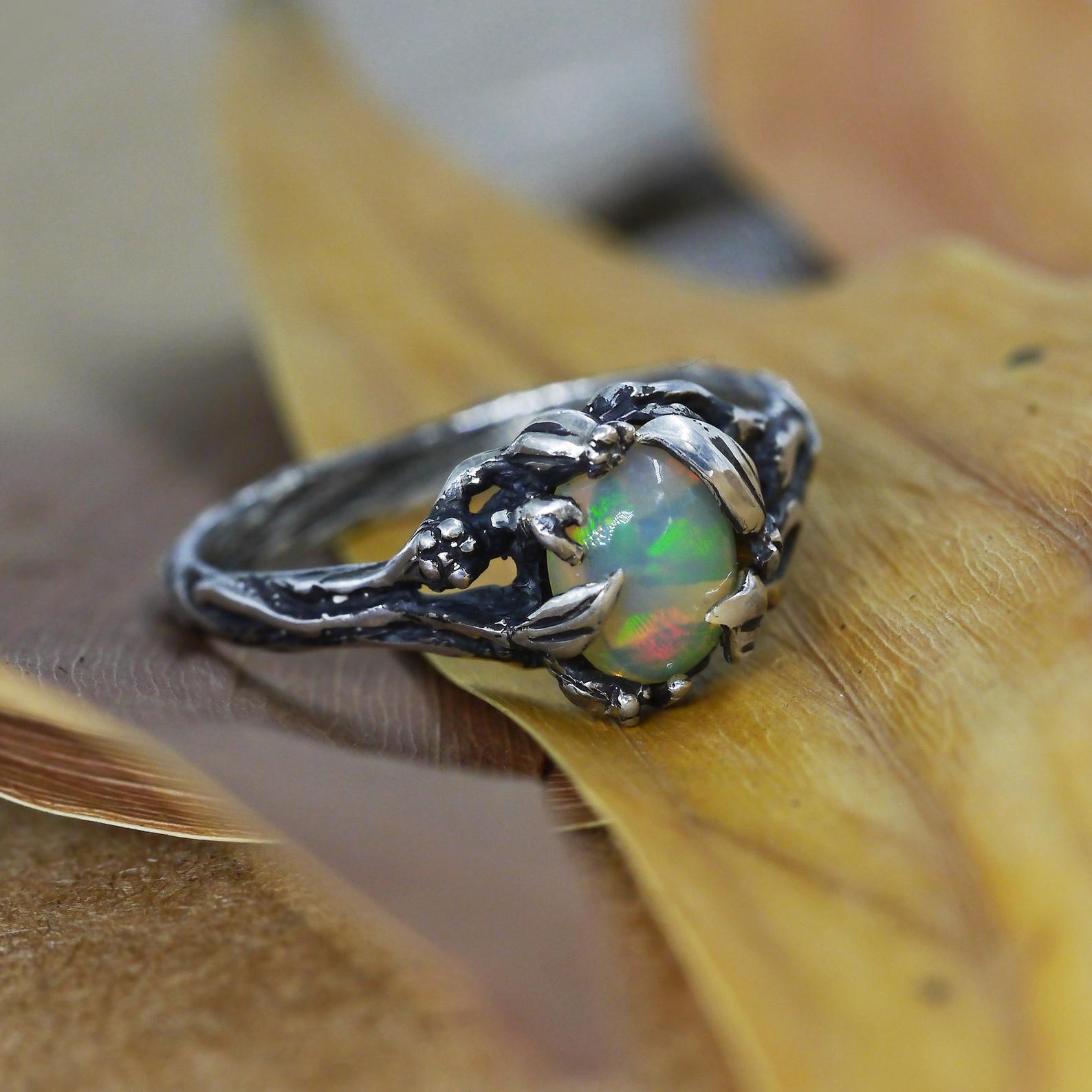Your Opal Jewel Has Gone Cloudy? Here's What It Means!
Opal is a stone that has no equal. It is amazingly beautiful and has a unique effect of an inside glow, which is called opalescence. A very special one among opals is the Ethiopian opal, which was discovered only in 2008. This stone has a varied play of colors, ranging from red to orange, as well as greenish to blue, white to yellowish, and brown. Some of the colors of Ethiopian opals are so exquisite and unique that they cannot be found anywhere else in the world. Ethiopian opal also has an interesting patterned structure. Only this type of opal can give such variety of patters. At the same time, opal is, so to say, a "living stone," because it contains a rather large amount of water, up to 20%! As you may guess, this water may evaporate, which is why the stone will become dull and may even be cracked. To prevent this from happening, you should know the reasons for this, as well as the rules for the treatment of opal. We will tell you about that in this new article.

Opal is a "living stone," because it contains a rather large amount of water, up to 20%! As you may guess, this water may evaporate, which is why the stone will become dull and may even be cracked.
MY OPAL HAS GONE CLOUDY! WHY?
Opal is a hydrate of silicon dioxide, which is a mixture of water and silica. This very composition of the stone explains why it sometimes changes its color. Various factors may affect the stone and cause it to lose water inside. Let us look at the reasons.
Reason 1 - temperature change
When the body temperature rises, the water from the opal begins to evaporate actively, and the stone becomes dull and cloudy. In the 19th century, healers even used this feature as a method of diagnosis.
Opal is also affected not only by the temperature of the human body but also by the air temperature and humidity. If the opal is left in a hot, humid place for a long time, it will most likely change color and become cloudy. This may also happen due to severely low temperatures. That is why it is important to keep an eye on the temperature in the room and remove the ring or other jewelry with opal when you are sick.
Reason 2 - Over-humidification
If you put opal in a glass of water for a long time or leave it in a very humid room, it will absorb too much water. And, of course, it will change color and its opalescence.

Reason 3 - Overdrying
If you accidentally forget an opal in a place where it is exposed to sunlight, for example, it will change color and stop shining. If this happens, it is important to immediately put the stone in a glass of water for a while. If you want to put opal on a thin cloth over the beaker of water, the stone will also absorb moisture.
Reason 4 - Ultrasound
Opal should never be cleaned using ultrasound. This procedure will ruin the stone because only stones that do not have cracks in their structure can be cleaned in this way.
Reason 5 - Chemical agents
Aggressive chemicals and opal are incompatible. Never use them to clean this stone. The best way to clean opal is to add soap to water, stir it, and put it there, rubbing it gently with a soft cloth. Then rinse under running water and put it to dry in a place that is not too hot or cold.
Reason 6 - Prolonged storage
Opals begin to cloud over and change color if they are not worn for a long time. So don't forget about your jewelry and wear it more often.
Reason 7 - Oil
Some people think that opals will look better if you rub them with oil. This is not the case. At best there will be no effect, but a thin layer may form on the stone, which will reduce the luster of the stone.
CHARMING OPAL JEWELRY
WHAT TO DO IF OPAL HAS LOST ITS COLOR?
If the stone does lose color, it is important to do a few things:
1. Pour distilled water into a container. Tap water is not suitable for this procedure because it contains chlorine.
2. Then put the opal for 5-10 minutes in this container or on top of a cloth or gauze. The method depends on how much the opal has changed color.
3. After that, you should take the opal out, wipe it gently with a soft cloth and leave it to dry in the open air in the shade avoiding direct sunlight. This procedure should return the stone to its rich color and opalescence.
Opal is a stone that cannot be confused with any other. It impresses with its unique coloring and an amazing glow. It is a very special stone. And just like any other gemstone with an unusual origin, it needs special treatment.
Kindly note that healing gemstone meanings are not prescriptions or healthcare information.

Worldwide Shipping
We ship worldwide with Express Delivery services

Lifetime Warranty
High Quality and Genuine Materials result in lifetime warranty

Ethically Handcrafted
Jewelry Ethically Handmade with respect to Nature and People









